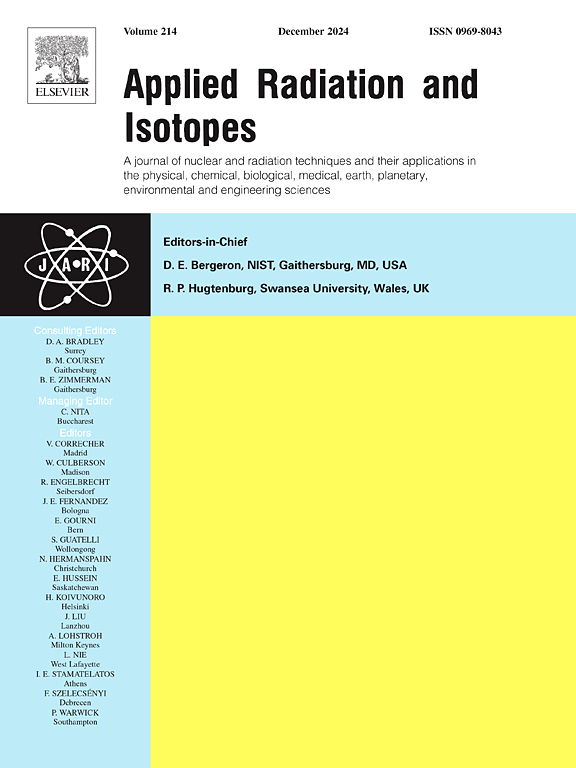Radiation dose assessment and establishment of diagnostic reference levels for MDP Tc-99m bone scans: A multi-hospital study in Saudi Arabia
IF 1.6
3区 工程技术
Q3 CHEMISTRY, INORGANIC & NUCLEAR
引用次数: 0
Abstract
Background
Bone scans using technetium-99m methylene diphosphonate (99mTc-MDP) are widely used in nuclear medicine for diagnosing various bone disorders. However, the radiation exposure associated with these procedures necessitates careful consideration and optimization.
Aim
This study aimed to evaluate radiation doses in terms of Effective Dose (ED) and establish Diagnostic Reference Levels (DRLs) for 99mTc-MDP bone scans in Saudi Arabia.
Method
Data were collected from 345 bone scan procedures across three hospitals in Saudi Arabia. Patient demographics, administered activities, and CT dose indicators were recorded. EDs were calculated using the RADAR Medical Procedure Radiation Dose Calculator. DRLs were established using the 75th percentile of administered activities.
Results
The study revealed variations in EDs across the three hospitals, with means ranging from 4.14 to 5.46 mSv for 99mTc-MDP bone scans. CT dose indicators were generally lower than those reported in some international studies. The established DRLs (75th percentile) for administered activities were 771 MBq, 841 MBq, and 1006.4 MBq for the three hospitals, respectively. These values were within the range of international DRLs but showed some variation compared to other Saudi Arabian studies.
Conclusion
This study provides valuable insights into current practices for 99mTc-MDP bone scans in Saudi Arabia. The observed variations in doses and established DRLs highlight the need for standardization and optimization of protocols across hospitals. These findings can serve as a benchmark for nuclear medicine facilities in Saudi Arabia, promoting radiation safety while maintaining diagnostic quality.
求助全文
约1分钟内获得全文
求助全文
来源期刊

Applied Radiation and Isotopes
工程技术-核科学技术
CiteScore
3.00
自引率
12.50%
发文量
406
审稿时长
13.5 months
期刊介绍:
Applied Radiation and Isotopes provides a high quality medium for the publication of substantial, original and scientific and technological papers on the development and peaceful application of nuclear, radiation and radionuclide techniques in chemistry, physics, biochemistry, biology, medicine, security, engineering and in the earth, planetary and environmental sciences, all including dosimetry. Nuclear techniques are defined in the broadest sense and both experimental and theoretical papers are welcome. They include the development and use of α- and β-particles, X-rays and γ-rays, neutrons and other nuclear particles and radiations from all sources, including radionuclides, synchrotron sources, cyclotrons and reactors and from the natural environment.
The journal aims to publish papers with significance to an international audience, containing substantial novelty and scientific impact. The Editors reserve the rights to reject, with or without external review, papers that do not meet these criteria.
Papers dealing with radiation processing, i.e., where radiation is used to bring about a biological, chemical or physical change in a material, should be directed to our sister journal Radiation Physics and Chemistry.
 求助内容:
求助内容: 应助结果提醒方式:
应助结果提醒方式:


